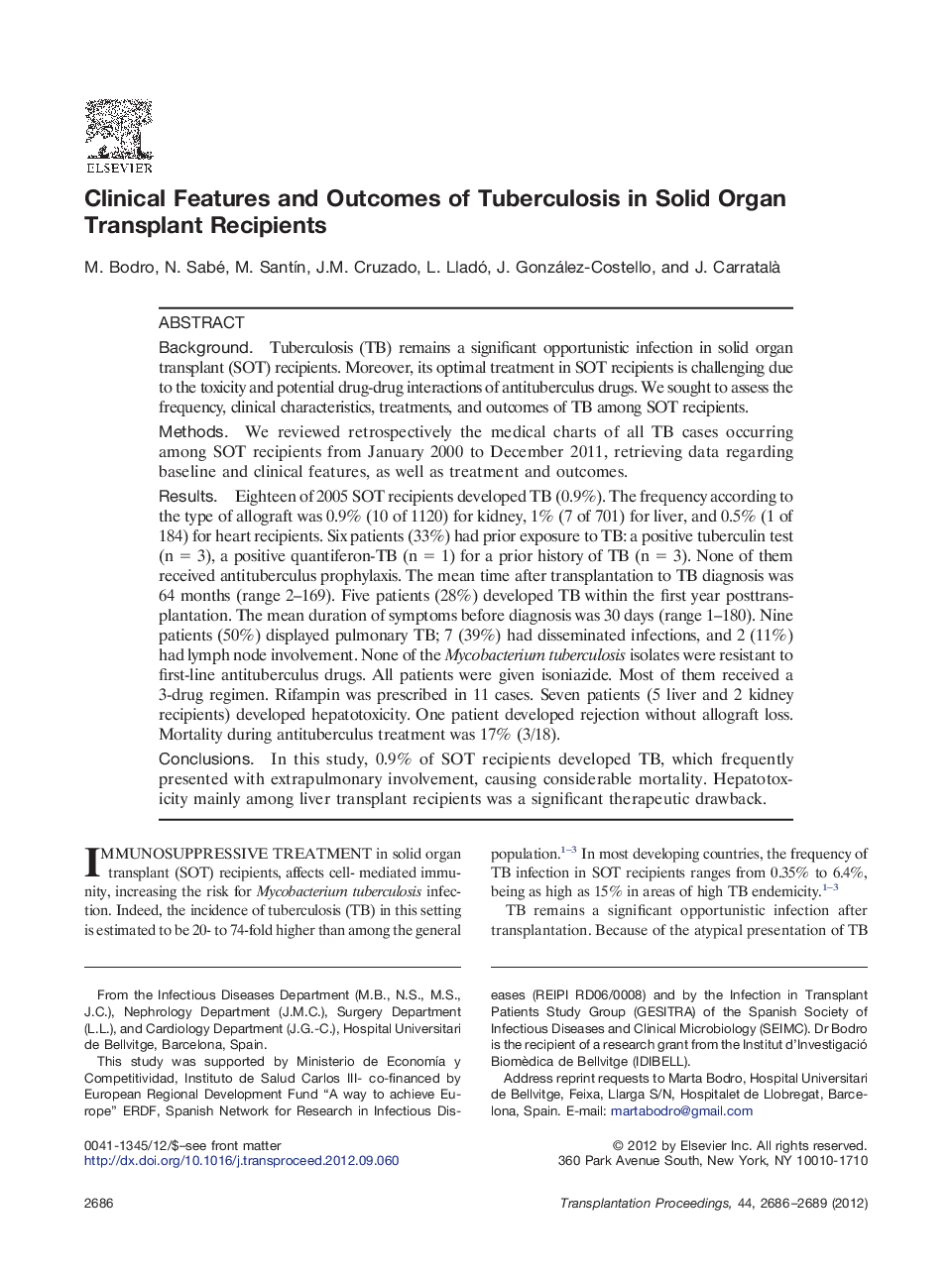| کد مقاله | کد نشریه | سال انتشار | مقاله انگلیسی | نسخه تمام متن |
|---|---|---|---|---|
| 4256296 | 1284519 | 2012 | 4 صفحه PDF | دانلود رایگان |

BackgroundTuberculosis (TB) remains a significant opportunistic infection in solid organ transplant (SOT) recipients. Moreover, its optimal treatment in SOT recipients is challenging due to the toxicity and potential drug-drug interactions of antituberculus drugs. We sought to assess the frequency, clinical characteristics, treatments, and outcomes of TB among SOT recipients.MethodsWe reviewed retrospectively the medical charts of all TB cases occurring among SOT recipients from January 2000 to December 2011, retrieving data regarding baseline and clinical features, as well as treatment and outcomes.ResultsEighteen of 2005 SOT recipients developed TB (0.9%). The frequency according to the type of allograft was 0.9% (10 of 1120) for kidney, 1% (7 of 701) for liver, and 0.5% (1 of 184) for heart recipients. Six patients (33%) had prior exposure to TB: a positive tuberculin test (n = 3), a positive quantiferon-TB (n = 1) for a prior history of TB (n = 3). None of them received antituberculus prophylaxis. The mean time after transplantation to TB diagnosis was 64 months (range 2–169). Five patients (28%) developed TB within the first year posttransplantation. The mean duration of symptoms before diagnosis was 30 days (range 1–180). Nine patients (50%) displayed pulmonary TB; 7 (39%) had disseminated infections, and 2 (11%) had lymph node involvement. None of the Mycobacterium tuberculosis isolates were resistant to first-line antituberculus drugs. All patients were given isoniazide. Most of them received a 3-drug regimen. Rifampin was prescribed in 11 cases. Seven patients (5 liver and 2 kidney recipients) developed hepatotoxicity. One patient developed rejection without allograft loss. Mortality during antituberculus treatment was 17% (3/18).ConclusionsIn this study, 0.9% of SOT recipients developed TB, which frequently presented with extrapulmonary involvement, causing considerable mortality. Hepatotoxicity mainly among liver transplant recipients was a significant therapeutic drawback.
Journal: Transplantation Proceedings - Volume 44, Issue 9, November 2012, Pages 2686–2689